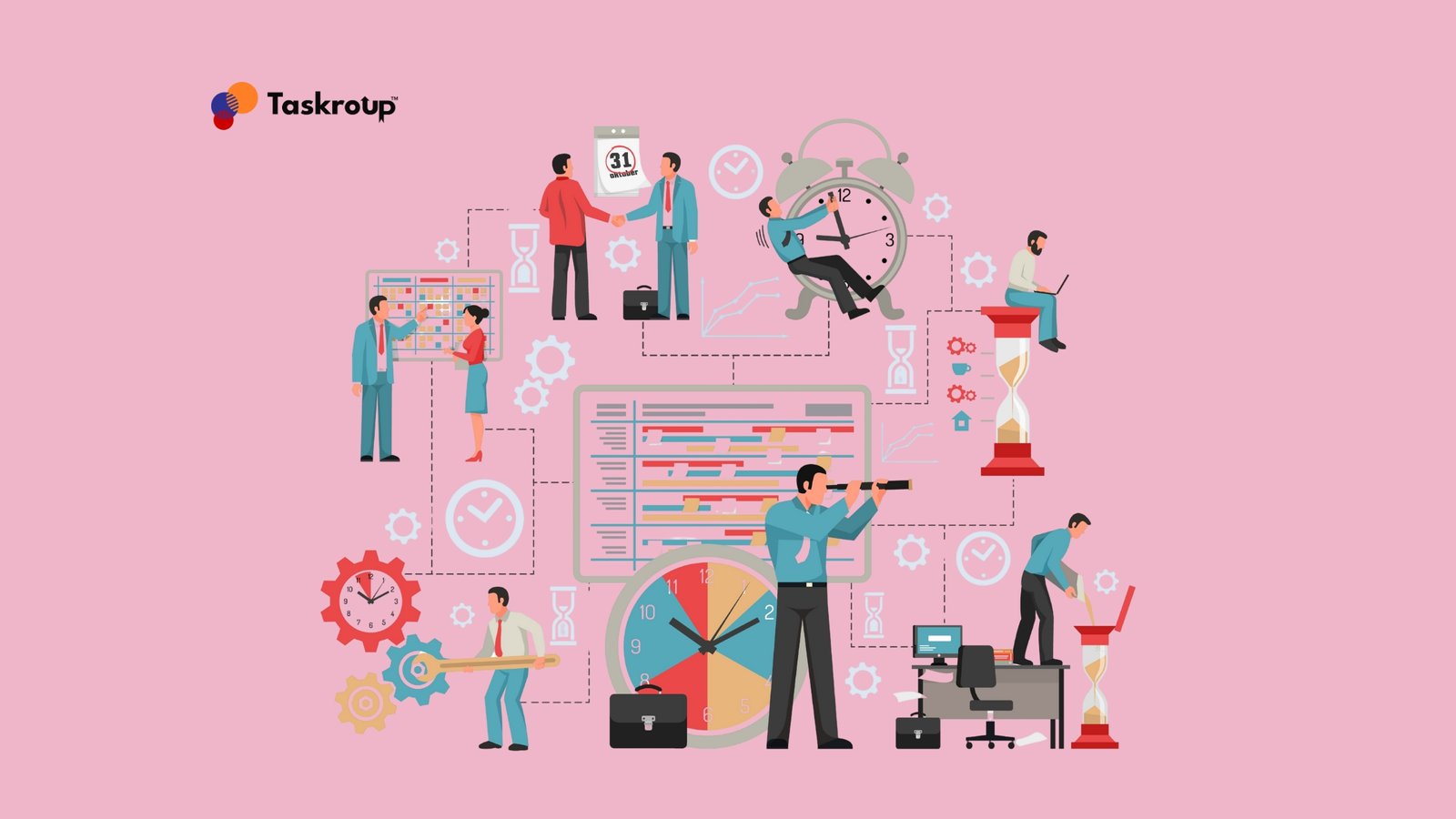Physical Address
304 North Cardinal St.
Dorchester Center, MA 02124
Physical Address
304 North Cardinal St.
Dorchester Center, MA 02124

When it comes to efficient planning, Gantt chart benefits project management by bringing visual clarity and control into the equation. At Taskroup, we believe Gantt charts are one of the most practical and widely used tools to ensure smooth project execution and cross-team alignment.
Whether you’re overseeing a software rollout, planning a marketing campaign, or handling a construction project, Gantt charts help visualize progress, allocate responsibilities, and avoid resource overloads. In this blog, we’ll explore how Gantt charts work, their key components, practical use cases, and best practices that bring teams together around a shared timeline.
A Gantt chart is a type of horizontal bar chart that maps project tasks along a timeline. Each task appears as a bar, with the start date and duration visually represented. The left side lists the project activities, while the horizontal axis tracks time.
Gantt charts help teams:
Lines or arrows often show how tasks relate to one another, such as one task needing to finish before another begins (Finish-to-Start dependency). With color-coded bars and real-time progress updates, team members can instantly see what’s complete, in progress, or delayed.
A well-structured Gantt chart includes the following elements:
Each of these components gives a snapshot of how the project is progressing and what steps are dependent on others. This improves transparency, especially when managing multiple teams or cross-functional deliverables.
Gantt charts are most useful when:
Whether you’re dealing with a detailed product development cycle or a tight marketing campaign, Gantt charts help keep everyone on the same page, reducing confusion and scope creep.
Here’s how different teams apply Gantt charts in real life:
Here’s how to build an effective Gantt chart:
Step 1: List All Tasks
Divide your project into distinct jobs and smaller, more manageable activities.
Step 2: Estimate Durations
Assign realistic timelines for each activity based on complexity and resources.
Step 3: Define Dependencies
Determine which tasks rely on the completion of others and apply the correct dependency type (Finish-to-Start, etc.).
Step 4: Assign Resources
Indicate team members or departments responsible for each task.
Step 5: Set Milestones
Identify critical project checkpoints that reflect key deliverables or deadlines.
Step 6: Track Progress
To show actual versus projected progress, update your Gantt chart on a regular basis.
Using Taskroup’s integrated Gantt chart feature, these steps become easier and more intuitive, allowing you to manage updates, team input, and timeline shifts with zero guesswork.
When selecting a Gantt chart tool, consider:
Taskroup offers all of these features in one streamlined dashboard—helping you plan, execute, and track projects with confidence.
Despite their advantages, Gantt charts may not be ideal for all situations:
The solution? Use Gantt charts alongside other PM tools to get a comprehensive project view.
Gantt charts are a staple in project management because they simplify complex project timelines and provide clear accountability across teams. Whether you’re managing a marketing campaign or software development sprint, these charts ensure that everyone knows what to do, when to do it, and how it fits into the bigger picture.
At Taskroup, we empower project managers and teams with intuitive Gantt chart features that simplify planning, boost productivity, and improve collaboration. When used correctly, Gantt charts serve as a powerful map guiding your project toward timely and successful delivery.